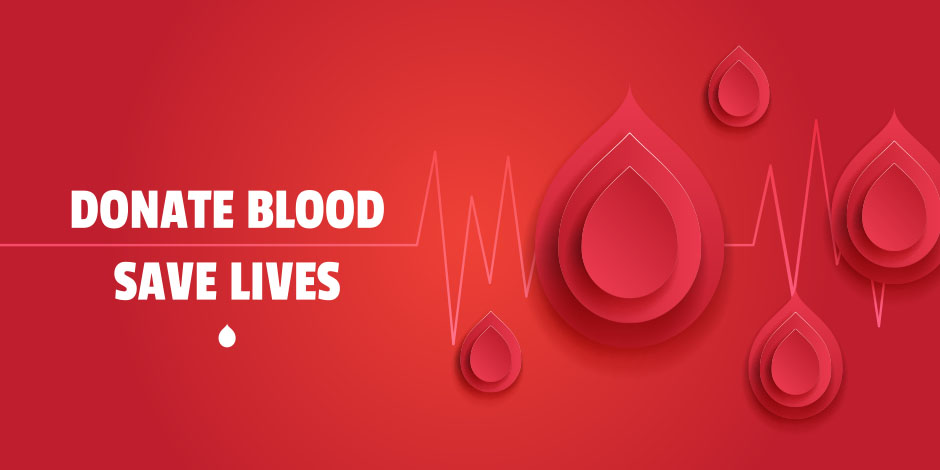Benefits Corner
Our Benefits Corner this month covers the total employee compensation statement. There are also articles on counting calories in alcoholic beverages, as well as, information on donating blood to help save lives.
Total Compensation Statement — Employee Compensation
Saia delivers a total compensation package that provides significant value to employees. It is designed to provide competitive compensation and benefits for you to meet your current financial needs, provide protection for you and your family should something unforeseen happen and help you reach your long-term financial goals.

Total compensation, also referred to as a “hidden paycheck” consists of compensation/pay, plus applicable overtime for work performed and benefits including:
- Medical coverage with prescription and vision components
- Company-paid life insurance and accidental death and dismemberment
- Company-paid disability
- Vacation pay
- Holiday pay
- Sick/personal time pay
- Matching 401(k) retirement savings of 50 percent up to 6 percent of your annual gross income
Saia continues to offer a valuable medical plan to employees and has not raised premiums over the last several years. The majority of the total cost of medical is paid for by Saia with eligible employees with 10 years or more of service receiving free medical, regardless of their level of coverage.
The following preventive measures may be used to assist Saia in keeping medical costs low:
- Always use in-network UnitedHealthCare doctors for services
- When filling prescriptions, ask your doctor for generics
- Remember to have your annual wellness appointment
You should have recently received your "Total Compensation Statement" outlining your compensation and benefits. Please review the amounts Saia contributes to your total compensation to understand the true value of your benefits package.
Counting Calories in Alcoholic Beverages

If you're counting calories, think before taking that next drink. It could have more calories than your favorite dessert.
A cocktail before dinner or a glass or two of wine with the meal is so common that some people don't even give it a second thought. But if you're trying to watch calories, here is something to think about before you take that next alcoholic drink.
This may be news to some, but alcohol has a lot of calories, often more than the dessert you turn down. To boot, having a drink or two before or with a meal may actually stimulate you to eat more and take in more calories. Researchers speculate that alcohol increases the pleasure of eating. While "under the influence," it's also more likely that you will lose your inhibitions and indulge in foods that are less nutritious.
Without a doubt, the calories in your alcoholic drink can affect your waistline just as the alcohol can affect you mentally and physically. But, you can enjoy small amounts of alcohol and still maintain or even lose weight. The key? Arm yourself with calorie facts and follow the tips below.
How many calories are you drinking?
Weight gain, loss, or maintenance depends on how many calories you take in. Most people are completely unaware of how many calories are in certain drinks. It's easy to go overboard without realizing it.
The calorie amounts listed here are for an average size drink. Many drinks may have even more, depending on how big the tumbler, glass, or beer mug is.
Alcohol can cause dehydration. Make sure to drink plenty of water when you have alcohol. Your body is better able to process fat when it's properly hydrated. Also, alcohol does not fill you up. Alcohol contains calories but doesn't typically make you full. This still leaves plenty of room for other indulgences.
Strategies for smart drinking
If you drink, do so only in moderation. This means no more than two drinks a day for men and one drink a day for women. Check with your doctor before drinking alcoholic beverages if you take any medicines (over-the-counter or prescription) or if you have any medical problems. Also, never drink on an empty stomach. This will lead to faster absorption of the alcohol and even more impaired judgment.
Drink slowly and alternate each beverage with water or seltzer. This allows you to have something in your hand while spacing out your alcohol intake. Dilute alcohol with water, ice, or seltzer. This avoids the extra calories found in mixers, sodas, and juices.
Trade a higher calorie drink for a lower one. If you love eggnog, look for lower calorie versions in the supermarket.
In the end, a smart strategy includes a plan for both eating and drinking. With that in mind, it may be possible to include some alcohol in your meal plan without piling on the pounds.
Donate Blood

Every two seconds, someone in the United States needs donated blood. On average, this means more than 41,000 blood donations are needed every day throughout the country.
Donating blood doesn’t take long on your part. The actual blood donation typically takes 10 to 12 minutes. The entire process, from the time you arrive at the blood bank or drive until the time you leave (including the juice and cookies/crackers afterward), takes about an hour and 15 minutes. For every pint of blood donated, up to three lives can be saved.
You don’t have to wait for a special blood drive to donate. You can give any time. For more information, go to http://www.redcrossblood.org/donating-blood.
If you want to create your own virtual blood drive to honor a special occasion or person and want to get others involved, check out https://sleevesup.redcrossblood.org/ to organize one online.
Source: American Red Cross





